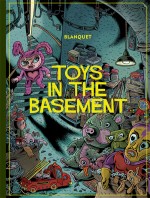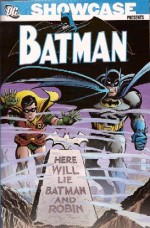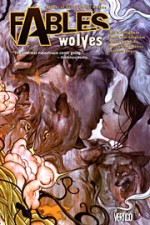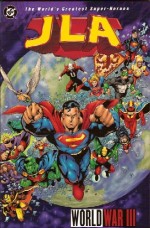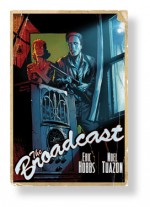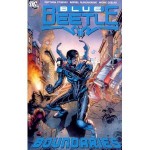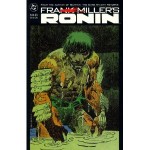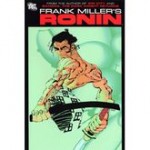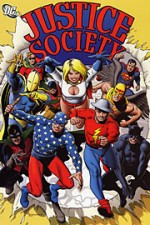
By Gerry Conway, Paul Levitz, Wally Wood, Joe Staton & various (DC Comics)
ISBN: 978-1-4012-0970-4
In the turbulent 1970s many old publishing ideas were finally laid to rest. The belief that characters could be “over-exposed†was one of the most long-lasting, garnered from years of experience in an industry that lived or died on that fractional portion of pennies derived each month from the pocket money and allowances of children which wasn’t spent on candy, toys or movies.
By the end of the 1960s comicbook costs and prices were inexorably rising and a proportion of titles – especially the newly revived horror stories – were consciously being produced for older readerships. Nearly a decade of organised fan publications and letter writing crusades had finally convinced publishing bean-counters what editors already knew: grown-ups avidly read comics too; they would happily spend more than kids and they wanted more, more, more of what they loved.
Explicitly: If one appearance per month was popular, extras, specials and second series would be more so. By the time Marvel Wunderkind Gerry Conway was ready to leave Marvel, DC was willing to expand its variegated line-up with some oft-requested fan-favourite characters. Paramount among these was the Justice Society of America, the first comicbook super-team and a perennial gem whose annual guest-appearances in the Justice League of America had become an inescapable and beloved summer tradition.
Thus in 1976 along with Blackhawk, Plastic Man, Secret Society of Super-Villains, Freedom Fighters, Kobra, Blitzkrieg and many others Conway signalled his DC tenure by reviving All Star Comics with number #58 (the original title had transformed overnight into All Star Western with that number running for a further decade as the home of such cowboy crusaders as Strong Bow, the Trigger Twins, Johnny Thunder and Super-Chief.
Set on the parallel world of Earth-2 and in keeping with the editorial sense of keeping the series relevant to young readers too, Conway reintroduced the veteran team and leavened it with a smattering of teen heroes, combined into a contentious, generation-gap fuelled “Super Squadâ€.
The youngsters included Robin (already a JSA member since the mid 1960s – see Showcase Presents the Justice League of America volume 3), Sylvester Pemberton, The Star-Spangled Kid (in actuality a teen superhero from the 1940s who had spent decades lost in time) and a busty young nymphet who quickly became the feisty favourite of a generation of growing boys: Kara Zor-L AKA Power Girl.
This first of twin volumes gathers all the 1970s tales into a fine showcase of different, ever-changing times and includes All-Star Comics 58-67 plus the seminal DC Special #29 which, after almost four decades, finally gave the JSA an origin…
After a three-page recap by Paul Levitz, Joe Staton & Bob Layton, outlining the history and mechanics of the alternate Earths, the first tale found newly-adopted Star-Spangled Kid chafing at his time-lost plight and revelling in his new powers (he had been given a cosmic power device by retired veteran Starman) in Seattle when a crisis propelled him and elder heroes Flash, Dr. Mid-Nite, Wildcat, Hawkman, Green Lantern and Dr. Fate into a three-pronged calamity devastating that city, Cape Town and Peking (which you youngsters now know as Beijing) with man-made natural disasters.
The veterans split up but were overwhelmed, giving the new kids a chance to shine in ‘All Star Super-Squad’. With the abrasive, impatient Power Girl in the vanguard the entire team is soon on the trail of old foe Degaton and his mind-bending ally in the concluding ‘Brainwave Blows Up!’ by Conway, Ric Estrada and Wally Wood.
Kieth Giffen replaced Estrada in issue #60 for the introduction of psychotic super-arsonist ‘Vulcan: Son of Fire!’ as age divide began to chafe and Power Girl began to tick off and re-educate the stuffy, paternalistic JSA elders. In ‘Hellfire and Holocaust’ the flaming fury mortally wounded Dr. Fate before his own defeat, and a new mystic menace was uncovered.
Conway’s last issue as scripter was #62’s ‘When Fall the Mighty’ as antediluvian sorcerer Zanadu attacked, whilst the criminal Injustice Gang opened their latest attack using mind-control to turn friend against friend…
The cast expanded with the return of Hourman and Power Girl’s Kryptonian mentor, but even they were insufficient to prevent ‘The Death of Doctor Fate’ (written by Paul Levitz and fully illustrated by the inimitable Wally Wood). Attacked on all sides, the team splintered: Wildcat, Hawkman and the Kryptonians tackling the assembled super-villains, Flash and Green Lantern searching Egypt for a cure to Fate’s condition and Hourman, Mid-Nite and Star-Spangled Kid desperately attempting to keep their fallen comrade alive.
They fail and Zanadu attacked again, almost adding Fate’s defenders to his tally until the sorcerer’s very presence called him back from beyond the grave…
With the crisis averted Superman prepared to leave but was quickly embroiled in a manic time-travel assassination plot (Levitz & Wood) that dragged the team and guest-star Shining Knight from an embattled Camelot in ‘Yesterday Begins Today!’ to the far-flung future and ‘The Master Plan of Vandal Savage’ a breathtaking spectacle of drama and excitement that signalled Wood’s departure from the series.
Joe Staton & Bob Layton had the unenviable task of filling his artistic shoes, beginning with #66 as ‘Injustice Strikes Twice!’ with the reunited team, sans Superman, falling prey to an ambush from their arch-enemies, whilst the emotion-warping Psycho-Pirate began to twist Green Lantern into a maniac menace determined to crush Corporate America leading to the return of Earth-2’s Bruce Wayne, who had eschewed his masked persona to become Gotham’s Police Commissioner.
The Injustice Society had monstrous allies and in ‘Attack of the Underlord!’ a subterranean race nearly ended the tea forever. Meanwhile Wayne laid plans to close down the JSA before their increasingly destructive exploits demolished his beloved city…
The modern adventures pause here and this first colourful chronicle closes with the aforementioned classified case from DC Special #29 (September 1977). ‘The Untold Origin of the Justice Society’ by Levitz, Staton & Layton, reveals how in 1940 Adolf Hitler acquired the mystical Spear of Destiny and summoned mythical Teutonic Valkyries to aid in the imminent invasion of Britain.
Alerted to the threat, American President Roosevelt, hampered by his country’s neutrality, asks a select band of masked mystery-men to lend their aid privately. In a cataclysmic escalation the struggle ranged from the heart of Europe, throughout the British Isles and even to the Oval office of the White House before ten bold costumed heroes finally – if only temporarily – stopped the Nazis evil plans…
These classic tales from a simpler time are a glorious example of traditional superhero storytelling at its finest: engaging, exciting and perfectly illustrated. No Fights ‘n’ Tights fan can afford to miss these marvellous sagas.
© 1976, 1977, 2006 DC Comics. All rights reserved.
